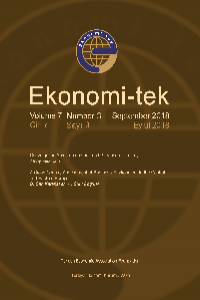Determinants of the Allocation of Funds Under the Capital Purchase Program
During 2008-09, as part of a wide-ranging rescue operation, the US Treasury poured capital infusions into a great many domestic financial institutions under the Capital Purchase Program (CPP), thus helping to avert a complete collapse of the US banking sector. In carrying out this effort, government regulators had to distinguish between those banks deserving of being bailed out and those that should be allowed to fail. The results of this study show that the CPP favored larger financial institutions whose potential failure represented higher degrees of systemic risk. This allocation of CPP funds was cost-effective from the point of view of taxpayers, as such banks reimbursed the government for their CPP bailouts sooner than expected. In contrast, smaller banks that were heavily into mortgage-backed securities,
mortgages, and non-performing loans were less likely to be bailed out and, if they did receive CPP help, took longer to repurchase their shares from the Treasury. Several explanations of such allocation decisions are proposed in this paper, including adverse selection of the mortgage products kept on banks’ books and the Treasury’s approach to distinguishing between insolvent and temporarily illiquid institutions.
Anahtar Kelimeler:
Capital Purchase Program, bank recapitalization, systemic risk
Determinants of the Allocation of Funds Under the Capital Purchase Program
During 2008-09, as part of a wide-ranging rescue operation, the US Treasury poured capital infusions into a great many domestic financial institutions under the Capital Purchase Program (CPP), thus helping to avert a complete collapse of the US banking sector. In carrying out this effort, government regulators had to distinguish between those banks deserving of being bailed out and those that should be allowed to fail. The results of this study show that the CPP favored larger financial institutions whose potential failure represented higher degrees of systemic risk. This allocation of CPP funds was cost-effective from the point of view of taxpayers, as such banks reimbursed the government for their CPP bailouts sooner than expected. In contrast, smaller banks that were heavily into mortgage-backed securities,
mortgages, and non-performing loans were less likely to be bailed out and, if they did receive CPP help, took longer to repurchase their shares from the Treasury. Several explanations of such allocation decisions are proposed in this paper, including adverse selection of the mortgage products kept on banks’ books and the Treasury’s approach to distinguishing between insolvent and temporarily illiquid institutions.
Keywords:
Capital Purchase Program, bank recapitalization, systemic risk,
___
- Acharya, Viral V., Lasse Pedersen, Thomas Philippon and Matthew Richardson, (2010), "Regulating Sytemic Risk", Federal Reserve Bank of Cleveland, Working Paper 10-02.
- Acharya, Viral V. and Raghu Sundaram, (2009), "The Financial Sector Bailout, Sowing the Seeds of the Next Crisis?", in V. Acharya and M. Richardson (eds.), Restoring Financial Stability: How to Repair a Failed System, New Jersey, Wiley Finance Series, pp. 327-339.
- Acharya, Viral V., Thomas F. Cooley, Matthew Richardson and Ingo Walter, (2011), Regulating Wall Street: the Dodd-Frank Act and the New Architecture of Global Finance, New Jersey, Wiley Finance Series.
- Adrian, Tobias and Markus K. Brunnermeier, (2011), "CoVaR," National Bureau of Economic Research, Inc., NBER Working Paper No. 17454.
- Cooley, Thomas F. and Thomas Philippon, (2009), "The Role of the Federal Reserve", in V. Acharya and M. Richardson (eds.), Restoring Financial Stability: How to Repair a Failed System, New Jersey, Wiley Finance Series, pp. 277-282.
- Dam, Lammertjan and Michael Koetter, (2011), "Bank Bailouts, Interventions, and Moral Hazard", Deutsche Bundesbank, Discussion Paper No. 10/2011, Series 2: Banking and Financial Studies.
- Duchin, Ran and Denis Sosyura, (2012), "The Politics of Government Investment", Journal of Financial Economics, 106(1), pp. 24-48.
- Fahlenbrach, Rüdiger, Robert Prilmeier and René M. Stulz, (2011), "This Time Is the Same: Using Bank Performance in 1998 to Explain Bank Performance During the Recent Financial Crisis", NBER Working Paper No. 17038.
- Fender, Ingo and Jacob Gyntelberg, (2008), "Overview: Global Financial Crisis Spurs Unprecedented Policy Actions", BIS Quarterly Review, December, pp. 1–24.
- Freixas, Xavier and Bruno M. Parigi, (2008), "The Lender of Last Resort of the 21st Century", CEPR, VoxEU.org Publication.
- Gale, Douglas M. and Xavier Vives, (2002), "Dollarization, Bailouts, And The Stability Of The Banking System", The Quarterly Journal of Economics, MIT Press, 117(2), pp. 467-502.
- Isyuk, Varvara, (2012), "CPP Funds Allocation: Restoring Financial Stability or Minimising Risks of Non-repayment to Taxpayers?," Centre d'Economie de la Sorbonne Working Paper, Université Paris 1 Panthéon Sorbonne.
- Khatiwada, Sameer, (2009), "Stimulus Packages to Counter Global Economic Crisis: A Review", Technical Report, International Labor Organization Discussion Paper DP/196/2009.
- Kibritcioglu, Aykut, (2002), "Excessive Risk-Taking, Banking Sector Fragility, and Banking Crises", University of Illinois at Urbana-Champaign, College of Commerce and Business Administration, Office of Research Working Papers, No. 02-0114.
- King, Michael R., (2009), "Time to Buy or Just Buying Time? The Market Reaction to Bank Rescue Packages", BIS Working Paper No. 288.
- Panetta, Fabio, Thomas Faeh, Guiseppe Grande, Corrinne Ho, Michael R. King, Aviram Levy, Federico M. Signoretti, Marco Taboga and Andrea Zaghini, (2009), "An assessment of financial sector rescue programmes", BIS Paper No. 48.
- Ratnovski, Lev and Rocco Huang, (2009), "Why Are Canadian Banks More Resilient?", IMF Working Paper WP/09/152.
- Stiglitz, Joseph E., (2012), "Restoring growth and Stability in a World of Crisis and Contagion: Lessons from Economic Theory and History", presentation at the Conference at PSE, Paris, February 2012.
- U.S. Government Accountability Office Report to Congressional Committees, (2009), "Troubled Asset Relief Program. June 2009 Status of Efforts to Address Transparency and Accountability Issues", GAO-09-658.
- U.S. Government Accountability Office Report to Congressional Committees, (2012), "Capital Purchase Program: Revenues Have Exceeded Investments, but Concerns about Outstanding Investments Remain", GAO-12-301.
- Wilson, Linus and Yan Wu, (2010), "Common (stock) Sense About Riskshifting and Bank Bailouts", Financial Markets and Portfolio Management, 24(1), pp. 3-29.
- ISSN: 2146-6173
- Yayın Aralığı: Yılda 3 Sayı
- Başlangıç: 2012
- Yayıncı: Türkiye Ekonomi Kurumu Vakfı
